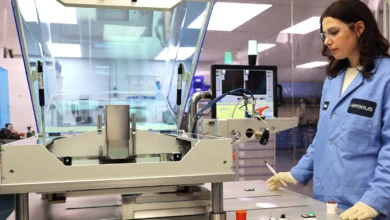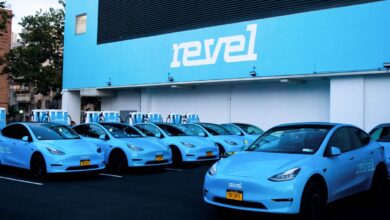Charged EVs | SWTCH’s load management system is tailored to the needs of multi-unit dwellings
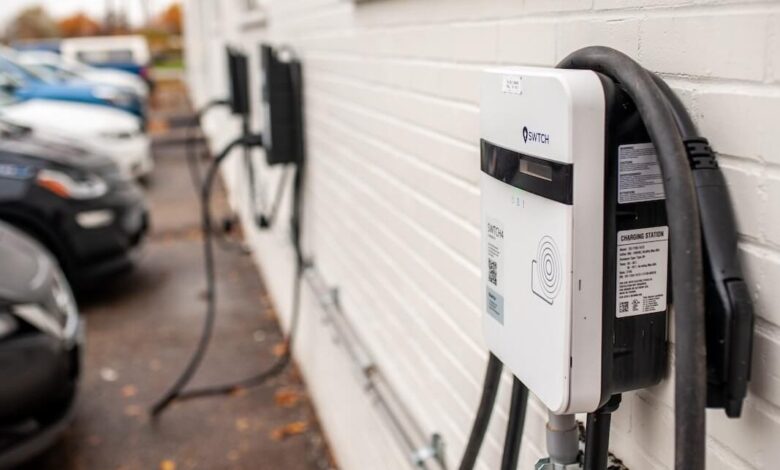
Q&A with SWTCH Head of Strategy Sofia Berrada
- Canada-based SWTCH offers charging solutions, including Charging as a Service, for multifamily, workplace and retail applications.
- Load management is a critical component of any EV infrastructure deployment, but multi-unit applications require different algorithms from those used in commercial fleet settings, which tend to have more predictable vehicle usage patterns.
- SWTCH’s load management system can be applied at four levels: to an individual circuit; to a group of chargers; to a panel with a mixed load; or to an entire building. When the highest level is applied, up to ten times the number of EV chargers can be deployed compared to charging with no load management.
Cars and their drivers come in all shapes and sizes, colors and creeds, and when it comes to keeping them charged, there’s no one-size-fits-all solution. Different EV infrastructure applications require different combinations of hardware, software and services, and as the charging market develops, different companies are emerging to serve different market segments.
Here at Charged, we’ve covered quite a few companies that target the commercial fleet market, which is rapidly electrifying, driven by the massive savings on fuel and maintenance costs and the need to compete on a price-per-mile basis. The multi-unit residential market, however, is a comparatively new frontier, and adoption is driven by a different set of considerations. For property owners, the benefits of providing EV charging for their tenants may not yet be clear, especially as retrofitting existing buildings can be complex and costly.
This is one of the markets that Canada-based SWTCH is focused on. We find that some of the characteristics of any kind of EV charging project also apply to MUD (Multi-Unit Dwelling) installations: software is what makes the whole ecosystem work; load management is critical for getting the most out of the available power; and vertical integration helps to ensure reliability.
SWTCH offers Charging as a Service tailored to the needs of multi-unit property owners. The company’s suite of software products includes a cloud-based OS, load management, real-time monitoring, API-based connectivity with parking management and other software, and OpenADR-compatible integration with V2G applications.
Sofia Berrada, SWTCH’s Head of Strategy, spoke with Charged, and explained some of the unique challenges of the multi-tenant charging market.
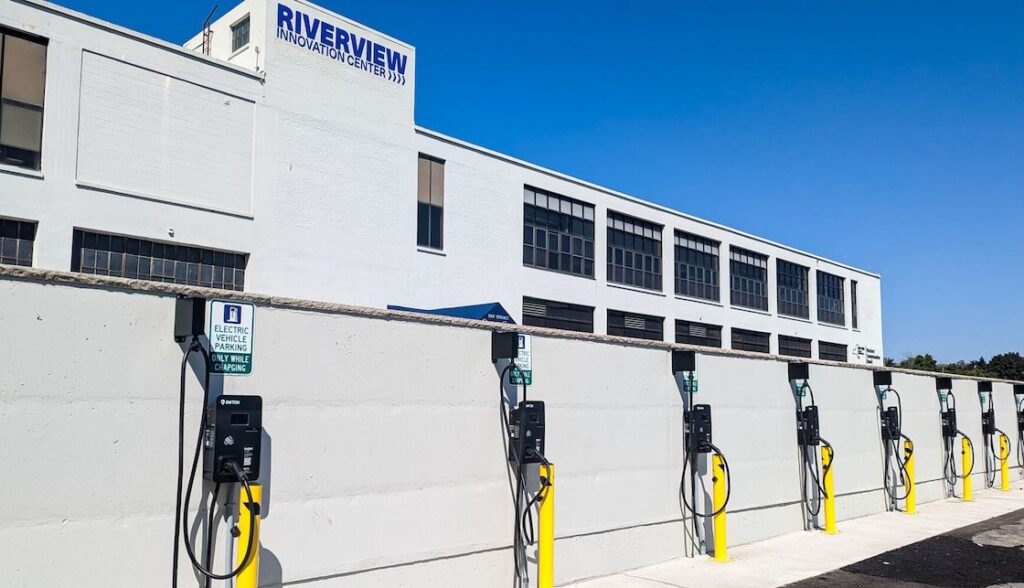
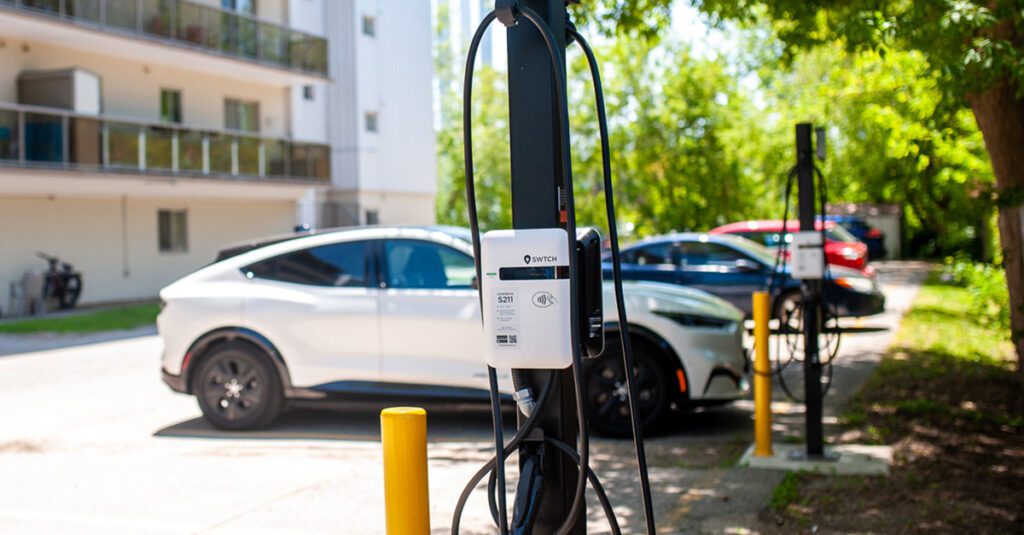
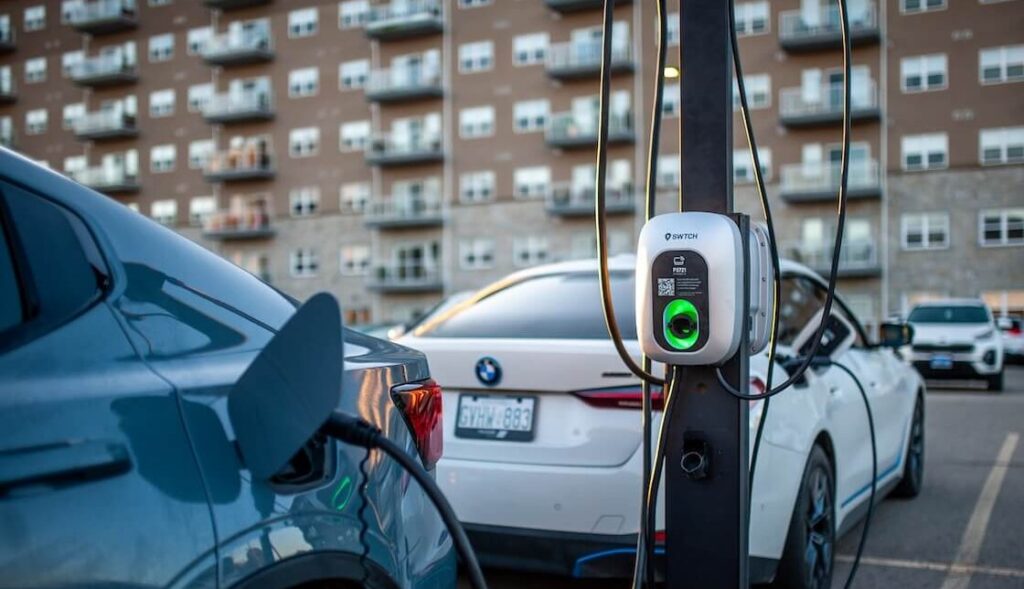
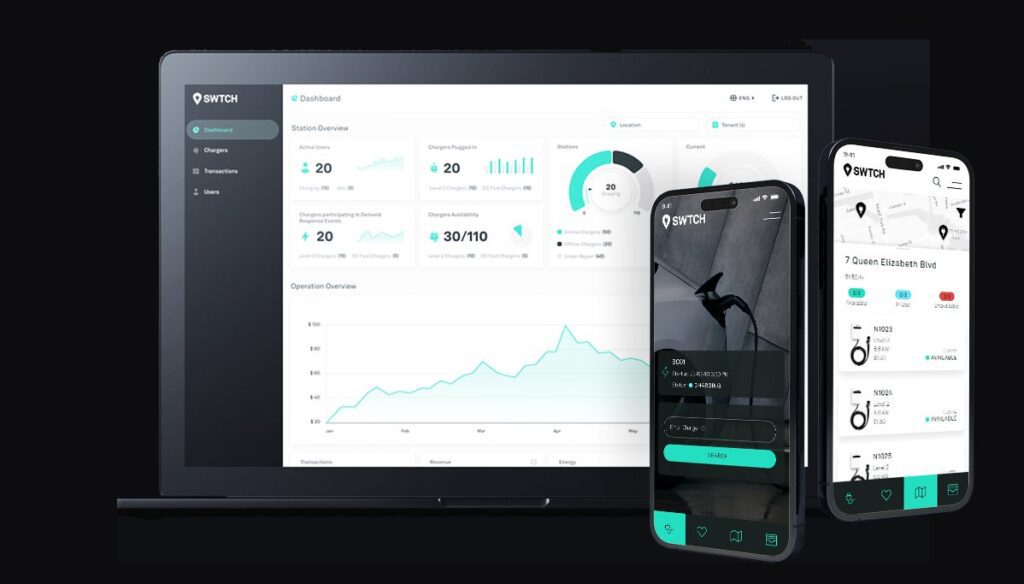
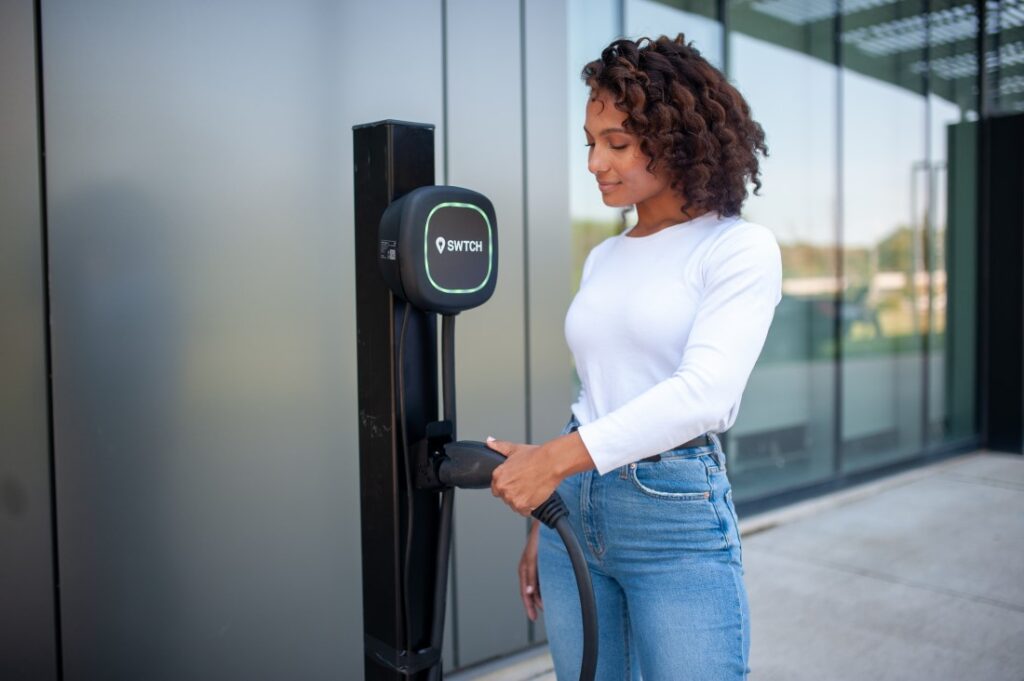
Charged: You’re targeting multifamily, workplace and retail applications rather than commercial fleets. Was that a conscious decision as a company?
Sofia Berrada: Yeah, it was. At SWTCH, we think if you want to deliver good-quality service, you have to be focused. As a software company, we want to make sure that we continue to build our software products to deliver the best service to the specific use cases we serve.
We originally started with a heavy focus on multifamily. Our founder, Carter Li, was trying to solve this problem for himself and built this company around that. But over time we’ve evolved to be more what we call multi-tenant parking-focused—trying to solve for areas where parking is used by different types of folks, whether it’s the public or a mix of guests, tenants, residents, etc.
As a software company, we want to make sure that we build our software products to deliver the best service to the specific use cases we serve.
Charged: Across those three applications, how do deployments differ in terms of the hardware, software and services that you offer?
Sofia Berrada: I think the biggest differences are related to power rating and the number of chargers. The multifamily deployment is probably going to be an average of six to ten chargers, they’re almost exclusively Level 2s, and they’re trying to deploy the maximum number of chargers for the residents, but not take up too much parking space. On the workplace side, you typically will see more Level 2s because they may have a fleet of vehicles that they want to charge. And when I say fleet, it could be just employee vehicles, not necessarily trucks or heavy-duty vehicles. Sometimes they may want DC fast charging, but it’s rare, and if they do, it’s usually one or two units. We see that with utilities that want to add chargers for their own employees, but also want to open it for third-party users. And then the last sector, the public and retail, is where we see most of the DCFC demands because people have less dwell time and they want to charge faster.
Charged: Other than the numbers and types of chargers, not much difference? Same software package, similar load management requirements?
Sofia Berrada: Yeah, that’s absolutely correct. I’d say load management is critical for all three, and that’s a core component of what we do at SWTCH because for the most part, except with new developments, they’re operating within existing infrastructure, so everybody wants to minimize installation costs, and the best way to do that is through load management.
And on the software side, a lot of customers want that multi-layer access that we provide. They may have tenants or employees that they want to provide with free or lower-rate charging, and then they will have potential guests or the public. That multi-tiered rate structure is something that our software is pretty sophisticated in.
Typically, we support our customers starting with the original design of the project, and then once the chargers have been installed and commissioned, we go through an onboarding process where we discuss the customer’s different use cases and how they want to structure their pricing. They can set up a lower rate for residents, they can set up different rates during the day and the evening, or they may have a time-of-use rate.
Charged: I hear a lot about the charging stack. Some companies provide just one layer of the stack, some provide the whole thing—Charging as a Service—and some let customers mix and match. Where do you fit in on that?
Sofia Berrada: That’s a great question, and I find it fascinating how complicated those different levels are, especially for customers. The bulk of our customers own their chargers because they see it as an amenity, and we have a set of partners that come in for the installation. In this case, customers cover upfront investment, and have full control over their costs and charger pricing. They get the full revenue from the charger and we support them through operations and maintenance.
We also offer Charging as a Service for customers that need it, especially to remove that upfront CapEx that may not work for some budgets. For example, that’s what we’re doing with one customer in partnership with Blue Whale—it’s fully bundled into one monthly fee for the customer. They still get to set their rates and recoup the revenue, but we own the chargers and work with them on a set fee. It’s also a model that works well when there are a lot of incentives, and we’re able to bake those in up front and allow them to unlock a much lower cost.
The bulk of our customers own their chargers, and we support them through operations and maintenance. We also offer Charging as a Service for customers that need it, especially to remove that upfront CapEx that may not work for some budgets.
Charged: You work with some other charging providers, including curbside charging specialist itselectric. We just did a feature article on them. They’re using your software on a white-label basis to run their charging network.
Sofia Berrada: Yes. We have a very strong partnership with itselectric. They chose us because our software supports OCPP, but also because of the support service and the different layers of access and pricing components that we can do on the SWTCH dashboard.
Charged: I think curbside charging is a big deal, because it solves the dilemma of how drivers who don’t have any parking spaces can charge their EVs. And one of the good ideas I think itselectric has is that their chargers don’t have built-in cables—the drivers bring their own.
Sofia Berrada: We are really fans of what they do with the cable-free solution. I think that’s the greatest value proposition for itselectric, and we’ve seen a lot of municipalities and others that are interested in that solution. We have some early-stage discussions with some hardware partners that can offer that, but I wouldn’t say that’s something we actively offer.
I think it definitely makes sense for curbside, but for the private side it’s probably less relevant. For our customers, as long as the cable is protected, it’s still a simpler experience to pull the cable and plug it into their car. If there is no vandalism risk, no issues with snow or freezing, in a private setting, we’ll definitely try to have that cable attached to the charger.
Charged: We’ve covered a lot of companies that provide Charging as a Service to commercial fleets, and they see load management as a critical piece of the system. Tell us more about load management for the markets that you’re addressing.
Sofia Berrada: I do think that load management is really key in that piece. The biggest difference for me is the ability to schedule and control the fleet. In the case of a commercial fleet, you know your fleet, you can set a schedule for when they’re going to charge and do that optimization between the vehicle and the charger. In the markets that we focus on, you have EV drivers that have their own schedules and they come to the chargers whenever they need a charge. However, you still want to optimize that because you want to have charging happen at times when the power is cheaper, at times when there isn’t a full peak demand on the building. So, the optimization and the algorithm that sits behind those different applications are fundamentally different.
At SWTCH, because of our history of being focused on the multifamily side, we have built a lot of software and IP around the ability to do optimization at different levels within the building. We can do it at a group of chargers level, we can do it within a panel between different chargers and other loads connected to a panel, and we can also do it at the whole building level.
In the case of a commercial fleet, you know your fleet, you can set a schedule for when they’re going to charge. In the markets that we focus on, EV drivers have their own schedules, so the algorithms that sit behind those different applications are fundamentally different.
Charged: Tell us more about load management as it relates to the question of the available power supply. Customers may think they’re not going to have enough power, but maybe they do, if you can show them how to optimize it.
Sofia Berrada: Absolutely. What we say to customers is that, with our highest level of load management, we’re typically able to deploy ten times the number of EV chargers that you would have deployed if there was no load management.
We have four levels of load management. The simplest one happens at the circuit level—let’s say it’s 40 amps, you have two chargers, they share that.
The second level is a group of chargers, and that involves our software. We have a set power rating for that group of chargers, and whenever someone comes to charge, they receive a certain level depending on the status of the rest of the chargers. If they’re the only one charging, they’re going to get the full power. If there are three other people, they may get only 80%.
The third level is when we do load management at a panel with a mixed load. That panel may have EV chargers and also other loads—lighting, HVAC, etc. Let’s say that panel is set at 50 kilowatts. If the rest of the load is already using 20 kilowatts, we know we’re left with 30 that we’re going to be able to split among the different chargers, and we can throttle that up and down.
And then the last level, which unlocks the highest number of EV chargers, is where we do it at the building level, connecting to several layers of panels. We may have an overall output for the building that we need to remain under, and therefore we’re going to be doing an optimization both in aggregate but also within each panel. That’s where the optimization becomes complicated, because every charger is limited by its own circuit, by the panel, and by the building, so you want to make sure that as you give them the authorization to go to a certain level, you are remaining within each of the parameters that you set up at the beginning.
With our highest level of load management, we’re typically able to deploy ten times the number of EV chargers that you would have deployed if there was no load management.
Charged: Do you make any of your own hardware?
Sofia Berrada: We’re fully hardware-agnostic. We’re OCPP 2.0.1-certified and therefore we work with any hardware that’s also OCPP-compatible. We have a testing facility in our lab, and we have a lot of different hardware partners that we bring in to test for how well they work with our software. Then, based on the customer needs, we’ll provide different solutions and put forward different hardware.
Compatibility testing is a really important piece of what we do. As much as we think of ourselves as a software company, we don’t think one can be successful in the EV industry without really understanding the hardware. The two need to work seamlessly together in order for the customer to have a good experience.
We have tested over 30 different brands of hardware, and under each brand there’s multiple different types of chargers. We stay closely in touch with different OEMs, and whenever there’s a new model released, we can bring it in and test the connectivity with our software. We will ensure that things like load management work well—our ability to send a signal to throttle down the chargers. We’ll ensure that there is a lot of ability to remotely diagnose, to reboot the charger if needed, because that can solve 70% of the issues that we may get. And we test it for some basic functionalities to make sure it’s a robust piece of hardware and give it our stamp of approval. Because ultimately, we’re responsible for the reliability of our network and the uptime.
In our headquarters in Toronto, we have a quite advanced setup for us to do the testing. We have a full board with different chargers and they’re all functional.
We don’t think one can be successful in the EV industry without really understanding the hardware. Hardware and software need to work seamlessly together for the customer to have a good experience.
Charged: Is V2X technology something you’re using in any commercial projects now, or is it still a pilot-stage technology?
Sofia Berrada: I would say at this stage it’s still at the pilot level. We recently had an outage in Toronto and we were able to power the building using vehicle batteries, which was pretty cool to do a vehicle-to-building use case. We have also done a pilot on vehicle-to-grid, which is the more complicated of the two.
I strongly believe that vehicle-to-building is going to happen sooner, especially in instances such as multifamily or workplace where you have longer dwell time. We can ask customers, “When do you need to have a full charge?” The vehicle-to-grid side is going to be more complicated because you’re pushing that electricity into an entire ecosystem that’s managed by the utility, and there’s a lot of coordination that needs to happen. The most complicated part is not the technology, but the stakeholders and the data flows that need to happen to ensure that the system can absorb that electricity.
Charged: Another question that I ask everybody is about charger reliability. Why is it so hard to keep those darn public chargers up and running?
Sofia Berrada: We believe that the majority of the problems can be caught at the beginning, when you put the charger in the ground. That’s one piece.
The second piece is the proactive management of the network. Typically, for the majority of issues, we’ll know when there’s an issue before our customers do, and we’ll try to resolve that before an EV driver comes in, because our software gets that info. I think with those two layers, you are able to catch the majority of the issues. Now, obviously you’re never immune to accidents, to vandalism, things like that, but I don’t think that’s the majority of what is driving the industry down.
We recently published something around what we call the 97.8% no-exception uptime. Our uptime doesn’t exclude anything. If there’s an accident, if there’s a power outage, that is not excluded, your charger is truly available 97.8% of the time, and that’s the average for our network over the past year. We’re really proud of that. It’s a lot of hard work from our ops team to maintain that, to ensure the quality check at the beginning, to ensure the customer support.
Charged: Can you still provide such an uptime guarantee when there are other companies involved in a particular deployment?
Sofia Berrada: The short answer is yes, definitely. And I think every company should. That’s why understanding the hardware and the electrical installation is so critical. You can’t just be a pure software company that’s disconnected from what happens in the ground.
A lot of our projects involve third-party installers that are not directly engaged by SWTCH, but rather by our customers. And we have a full process that we work through with them. We work with them before they install the charger to spec everything. We have a sales engineering team that’s pretty advanced and can provide any red flags on electrical drawings, plans for where to put the chargers and what type of hardware they offer. And then, before we activate the charger on our network, we get on the phone and go through a checklist with them to ensure that everything has been done to a certain level of quality.
Charged: At the moment, you work only in Canada and the US. Given the changing political situation, do people in the EV industry need to do things differently? Are there some things we can do to protect ourselves?
Sofia Berrada: I think we can try to find the right path to be sustainable with less incentives and support from the public sector. Similar to other clean technologies such as solar and wind that benefited from that as they scaled, we are now seeing a lot of utilization for EV chargers. Our utilization over the past year grew by over 50%.
We are seeing enough demand for these chargers that we are reaching the point where they can sustain themselves, and we’re working with customers to continue to lower installation and maintenance costs, and at the same time, finding other ways to engage customers so that these projects can sustain themselves.
Charged: So, would you say the industry has reached a point where we are not dependent on government support anymore?
Sofia Berrada: I think it’s getting there. I think we need to get there faster. I think it’s very location-dependent, and so you’re always going to have some locations that will need some government support, whether it’s disadvantaged communities or rural areas. But I think in dense urban areas, we’re already there in a lot of cases, and if not, we’re getting very close to it.

